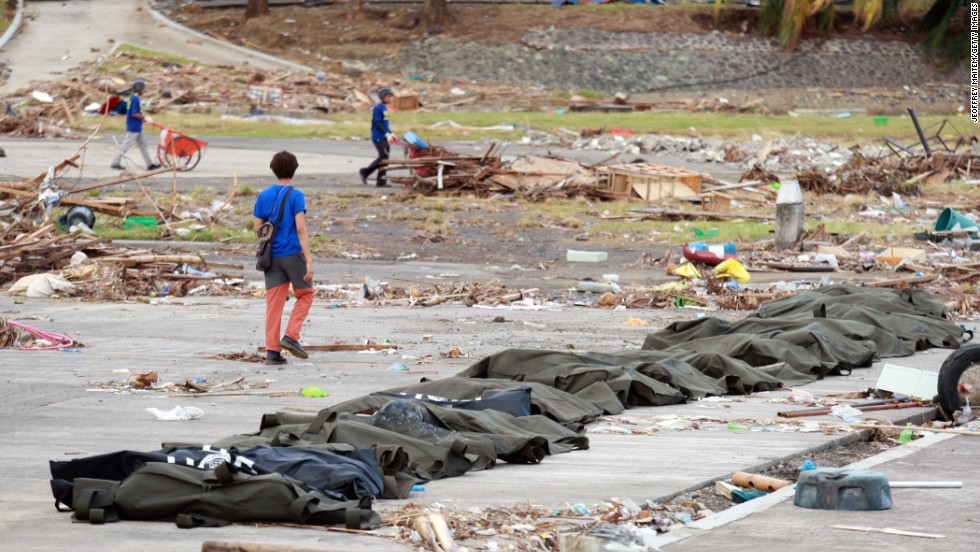On November 2013, the Philippines was struck by Typhoon Haiyan, the deadliest and most destructive tropical cyclone in Philippine recorded history. The typhoon took 6,300 lives and affected 1.48 million families in addition to causing approximately $2 billion in damages. The resulting destruction in provinces such as Eastern Samar, Leyte, Quezon, Capiz, Iloilo, Aklan and Antique required evacuation operations care of local government units  and intensive relief and rehabilitation operations by the combined efforts of the National Disaster Risk Reduction Management Council (NDRRMC), Department of Interior and Local Government (DILG), Department of Health (DOH), Department of Social Welfare and Development (DSWD), Armed Forces of the Philippines (AFP), Office Of Civil Defense (OCD), Bureau of Fire Protection (BFP), various non-government organizations and civilian aid. The NBI had been charged with handling natural disasters while the Philippine National Police (PNP) is charged with missing persons and human-induced disasters.

Just two weeks after the incident, almost two thousand bodies had been recovered from affected areas, a number that would continue to increase as relief and recovery operations continued. Majority of the bodies died through drowning or were hit by falling objects from collapsed structures. Retrieval of bodies was conducted with the assistance of the PNP and the Bureau of Fire Protection (BFP), while external examinations, standard data collection, and body identification were conducted by teams from DOH and NBI. Fifty percent of the bodies received in the collection center were examined by the DOH team, while the remainder was processed by the NBI. Only fourteen percent were identified through personal belongings while reports estimate thirty three to eighty nine percent of the bodies have remained unidentified prior to mass burial for sanitation purposes. Failure to identify a huge proportion of the recovered bodies was a massive disappointment to both the public and the families of the victims, which subsequently led to a decrease in public trust in the bureaucracy.
This failure was attributed to poor post-disaster management planning, along with the lack of a common database and a single identification algorithm across agencies. The lack of guidelines and procedures in the management of bodies made it extremely difficult to cross-reference information between autopsy details and missing persons reports. These events prompted the creation of a Unified Workflow for the NBI and other agencies involved in Disaster Victim Identification proposed by Dr. Arjay Jeresano, a medico legal officer of the NBI. The Workflow complements the National Policy on the Management of the Dead and the Missing Persons During Emergencies and Disasters. During a disaster, the MDM cluster is activated followed by the deployment of field commanders and post-mortem teams to the affected sites, sampling and collection, identification process, ante-mortem team deployment, matching of identities, and reconciliation of bodies with their respective families. The project earned the title of Most Collaborative Re-Entry Project from DAP.

The Unified Workflow of the NBI was applies SECI Model of Organizational Knowledge Creation (Nonaka and Takeuchi 1996) which involves four ways in which knowledge types can be combined and converted: 1) The sharing and creation of tacit knowledge through direct experience; 2) Learning and acquiring new tacit knowledge in practice; 3) Articulating tacit knowledge through dialogue and reflection; and 4) Systemizing and applying explicit knowledge and information. The model is based on two types of knowledge – explicit and tacit. Tacit knowledge is held by individuals and is not readily expressed or transferred such as things we can explain but have not externalized while explicit knowledge is knowledge that has been articulated and expressed, or knowledge that comes from inside and outside the organization that has been combined. The fundamental quality of the SECI Model is the transformation of the two types of knowledge into meaningful information for a specific purpose, best exemplified in this case by the system of post-mortem data collection and identification. Through this new system, agencies will have a set of guidelines to follow to significantly decrease the number of unidentified bodies in future disasters.

Knowledge management, along with inter-agency coordination and planning, can save lives and maintain order in times of disasters. The establishment of systems, guidelines and procedures remain crucial in improving organizational productivity, maintaining the quality of service delivery and excellence in any organization.
